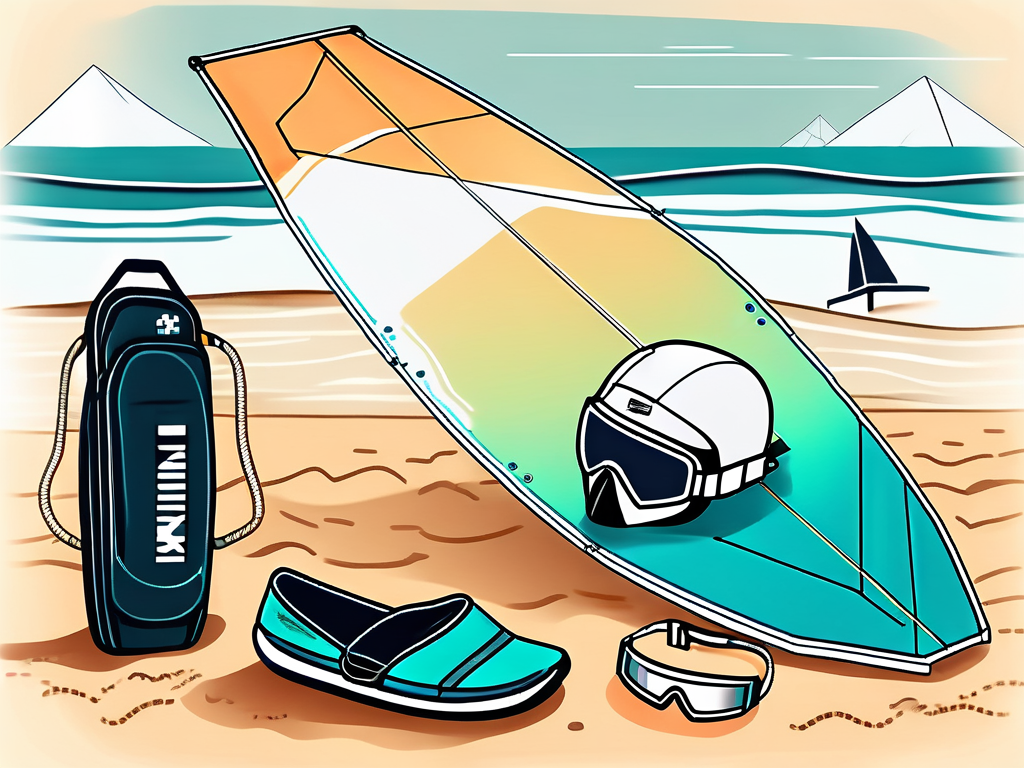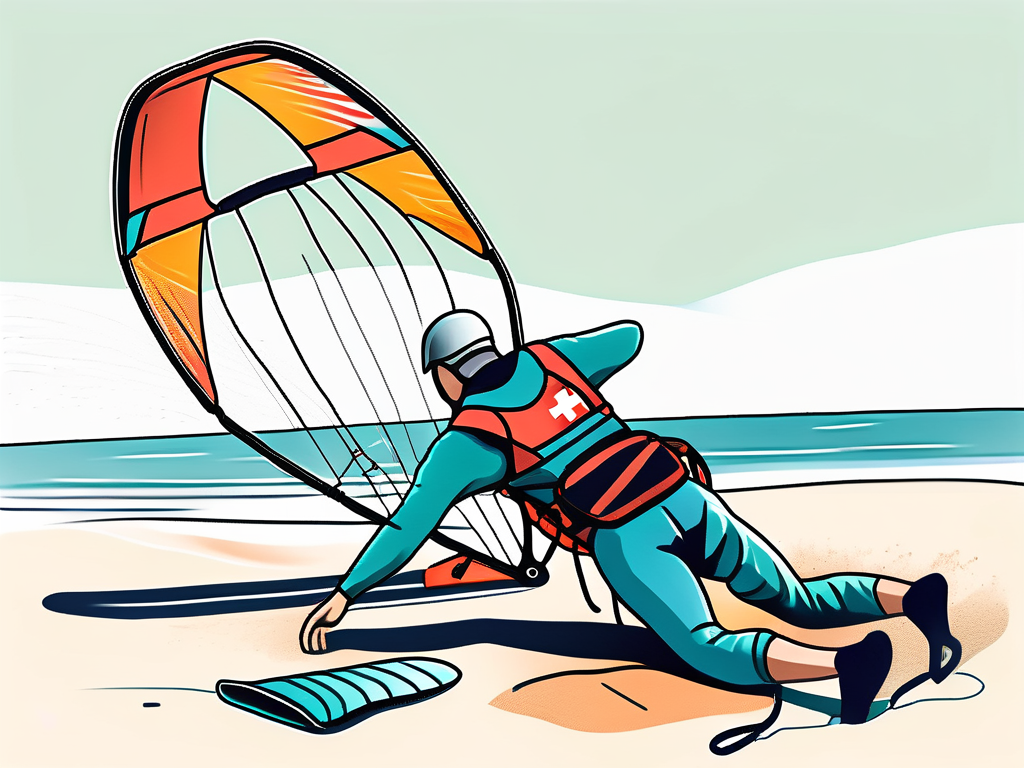Kitesurfing is an exhilarating water sport that combines elements of surfing, windsurfing, and paragliding. As with any extreme sport, it's important to prioritize safety and take proper precautions to prevent injuries. This ultimate guide will provide valuable insights into injury prevention and recovery for kitesurfers, ensuring that you can enjoy this thrilling activity while staying safe and minimizing the risk of accidents.
Essential Gear for Kitesurfing
When it comes to kitesurfing, having the right gear is crucial for your safety and overall experience. Here are some essential items that every kitesurfer should have:
- A Kite: The kite is the heart of kitesurfing. It's important to choose the right size based on your skill level, wind conditions, and body weight.
- A Control Bar: The control bar allows you to steer the kite and control its power. Make sure it's in good condition and properly adjusted.
- A Harness: The harness helps distribute the kite's pulling force and relieves strain from your arms. Choose one that fits comfortably and provides good back support.
- A Board: There are various types of boards available, such as twin tips and directional boards. Pick a board that suits your riding style and the conditions you'll be facing.
- Safety Equipment: Don't forget essentials like a helmet, impact vest, and a leash to ensure your safety on the water.
Having the right gear is just the first step. It's equally important to maintain and regularly inspect your equipment to prevent any accidents due to wear and tear. Always follow the manufacturer's guidelines regarding maintenance and replacement of parts.
Additionally, when it comes to kitesurfing, understanding wind patterns and weather conditions is essential for a safe and enjoyable experience. Before heading out, check the weather forecast and wind conditions to ensure they are suitable for kitesurfing. Different kite sizes are recommended for various wind strengths, so being aware of the wind speed is crucial for selecting the appropriate kite.
Furthermore, proper hydration and sun protection are often overlooked aspects of kitesurfing gear. Being out on the water for extended periods exposes you to the sun's strong rays, so wearing sunscreen, a hat, and UV-protective clothing is vital to prevent sunburn and heat exhaustion. Staying hydrated by bringing an ample supply of water with you is also important to maintain your energy levels throughout your kitesurfing session.
Safety First: Choosing the Right Kitesurfing Equipment
When it comes to selecting kitesurfing equipment, there's a wide range of options available on the market. Here are some factors to consider:

- Skill Level: Choose equipment suitable for your skill level. If you're a beginner, opt for gear that offers stability and control.
- Wind Conditions: Different kites are designed for different wind conditions. Choose a kite that matches the average wind speed in your location.
- Body Weight: Your body weight plays a role in determining the size of the kite you should use. Lighter riders generally require smaller kites.
- Water Conditions: The type of water you'll be kitesurfing in also affects equipment selection. For example, waves and choppy water may require different board designs.
It's always beneficial to consult with experienced kitesurfers or professionals at reputable stores to get personalized advice based on your specific needs. Remember, investing in high-quality equipment from trusted brands is essential for your safety.
Additionally, when choosing kitesurfing equipment, consider the importance of safety gear such as helmets, impact vests, and harnesses. These items are crucial for protecting yourself from potential injuries while out on the water. Make sure to invest in gear that fits properly and is in good condition to ensure maximum protection.
Another factor to keep in mind is the maintenance of your kitesurfing equipment. Regularly inspecting and maintaining your gear, including checking for any wear and tear, will help prolong its lifespan and keep you safe during your sessions. Proper storage, rinsing off saltwater after use, and storing equipment away from direct sunlight are all important practices to maintain the quality of your gear.
The Evolution of Kitesurfing: From Spills to Thrills
Kitesurfing has come a long way since its inception, evolving from a sport with a steep learning curve to one that offers exhilarating thrills. Today, kitesurfers are able to perform awe-inspiring aerial maneuvers and ride waves with finesse. However, this progress has been accompanied by a fair share of spills and accidents.

Learning from the experiences of seasoned kitesurfers is invaluable for injury prevention. Take the time to educate yourself about the risks involved and the safety measures you can take. Gradually progress through different skill levels, and never attempt advanced maneuvers without proper training and guidance.
One of the key factors in the evolution of kitesurfing has been the advancement in kite design and technology. Modern kites are now more efficient, stable, and safer than their predecessors, allowing riders to push the boundaries of the sport with confidence. Additionally, improvements in kiteboarding gear, such as harnesses and control bars, have enhanced rider control and comfort, contributing to the overall growth and popularity of kitesurfing.
Furthermore, the kitesurfing community has played a vital role in shaping the sport's evolution. Through organized events, competitions, and online forums, kitesurfers from around the world have been able to share knowledge, techniques, and experiences, fostering a sense of camaraderie and collaboration. This sense of community has not only propelled the sport forward in terms of skill and innovation but has also created a supportive network for kitesurfers of all levels to learn, grow, and thrive in this dynamic and exciting sport.
The Importance of Proper Warm-Up in Kitesurfing
Before you head out onto the water, it's crucial to warm up your body to prepare it for the physical demands of kitesurfing. A proper warm-up routine can enhance your performance, prevent injuries, and even improve your overall experience. Here are some warm-up exercises specifically tailored for kitesurfers:

- Dynamic Stretching: Dynamic stretches involve moving parts of your body through a full range of motion. Perform exercises like arm circles, leg swings, and torso twists to warm up your muscles and joints.
- Cardiovascular Warm-up: Perform light aerobic exercises like jogging or skipping to raise your heart rate and increase blood flow to your muscles.
- Balance and Coordination Drills: Engage in activities that challenge your balance and coordination, such as standing on one leg or practicing yoga poses.
Remember to tailor your warm-up routine to your specific needs, considering factors like your fitness level, any previous injuries, and the intensity of your kitesurfing session. Take the time to warm up properly and listen to your body, making adjustments as necessary.
Additionally, incorporating some specific kitesurfing movements into your warm-up can be highly beneficial. Practice simulated kite movements with your arms to mimic the motion of controlling the kite in the air. This can help activate the muscles you'll be using during your session and mentally prepare you for the physical demands of kitesurfing.
Another important aspect to consider during your warm-up is hydration. It's essential to start hydrating well before hitting the water, as kitesurfing is a high-intensity sport that can quickly deplete your energy and fluids. Drink plenty of water in the hours leading up to your session and consider bringing a water bottle with you to stay hydrated while on the water.
Stretching for Success: Enhancing Performance and Preventing Injuries
Stretching is an essential component of any kitesurfer's routine, both before and after their sessions. It helps improve flexibility, prevent muscle imbalances, and reduce the risk of injuries. But why is stretching so important for kitesurfers? Let's dive deeper into the benefits and explore some additional stretching exercises that can take your kitesurfing game to the next level.
When it comes to kitesurfing, having a strong and flexible lower body is crucial. By focusing on stretching your quads, hamstrings, hip flexors, and calf muscles, you can enhance your maneuverability on the board. Imagine effortlessly gliding through the waves, smoothly transitioning from one trick to another. These lower body stretches will not only improve your performance but also help prevent muscle strains and imbalances that can hinder your progress.
But it's not just the lower body that needs attention. Kitesurfing also puts a significant strain on the upper body, especially the shoulders, chest, and back. The repetitive movements involved in kitesurfing can lead to muscle imbalances and poor posture if not properly addressed. By incorporating upper body stretches into your routine, you can maintain good posture, reduce the risk of injuries, and ensure that you're always ready to take on the next wave.
Now, let's not forget about the core. Your core muscles play a crucial role in providing stability and control while riding the waves. Strengthening your core and regularly stretching it can significantly improve your balance and overall performance. So, don't neglect those planks, crunches, and other core-strengthening exercises. Your body will thank you for it.
Incorporate these stretches into your routine, both at home and at the beach before and after kitesurfing sessions. Remember to perform them gently and avoid bouncing or pushing beyond your comfort zone. Stretching should feel good and never cause pain. Take your time, breathe deeply, and let your body gradually adapt to each stretch.
So, the next time you head out for a kitesurfing session, make sure you give your body the attention it deserves. Injury prevention is paramount in kitesurfing, and by choosing the right gear, prioritizing safety, warming up properly, and incorporating these stretching exercises into your routine, you can minimize the risk of injuries and ensure a memorable and enjoyable kitesurfing experience. Stay safe, stay informed, and always be aware of your limits and capabilities to fully enjoy the thrill of the sport.





